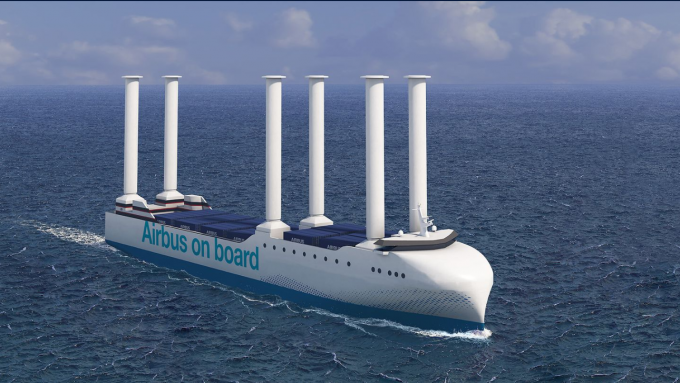Zemba gets things moving, as Hapag-Lloyd signs up for 'greener' shipping
Proving to be more than just idle talk, the Zero-Emission Maritime Buyers’ Alliance (Zemba) has ...

Airbus is to replace its shipping fleet in a bid to reach 2030 decarbonisation goals, and has commissioned three new vessels that will be supported by wind propulsion.
From 2026, the three low-emission vessels, commissioned from Louis Dreyfus Armateurs, which will build, own and operate them, will transport aircraft sub-assemblies between Airbus production facilities in Europe and the US.
The new vessels are expected to reduce the manufacturer’s average annual transatlantic CO2 emissions by more than half – from 68,000 tonnes to 33,000, helping Airbus reach its emissions reduction target of 63%.
Head of sustainability & environment at Airbus Nicolas Chrétien said: “The renewal of our marine fleet is a major step forward in reducing our environmental impact. The latest generation of vessels are more fuel-efficient, using cutting-edge technologies like wind-assisted propulsion.”
Notably, the new vessels will deploy rotor technology rather than the kite system shown below.
Last year, the Louis Dreyfus Armateurs vessel Ville de Bordeaux, chartered by Airbus, completed trials of propulsion company Airseas’s automated kite system Seawing, which harnesses wind power to help propel the vessel and reduce the main engine load.
However, these trials did not achieve sufficient emissions reductions, and Airbus’s new vessels will be powered by a combination of six Flettner rotors, cylinders that generate lift from the wind and propel the ship forward, and two dual-fuel engines running on maritime diesel and e-methanol. Routing software will be used to maximise wind propulsion and avoid drag caused by adverse ocean conditions.
Airseas announced today that the Ville de Bordeaux Seawing trials “revealed projected fuel and emissions reductions of 16%, based on a normal transatlantic voyage”, but added that “Seawing’s broader development roadmap was aimed at delivering average savings of 20%”. It said the next steps “will focus on delivering the kite’s full performance”.
Airbus will phase-in its three new vessels on the transatlantic, replacing the City of Hamburg and Ville de Bordeaux, which ferry its sub-assemblies between Saint-Nazaire in France and its assembly line in Mobile, Alabama, and will replace the Ciudad de Cadiz on Airbus’s Mediterranean route, connecting St Nazaire, Porto and Naples.
Airbus said the fleet renewal also supported its ambition to increase its A320 family production rate to 75 aircraft a month by 2026.
The new transatlantic vessels will have capacity for 70 40ft containers and six single-aisle aircraft sub-assembly sets, comprising wings, fuselage, engine pylons, horizontal and vertical tail planes, compared with only three or four sets on the current ships.
Comment on this article